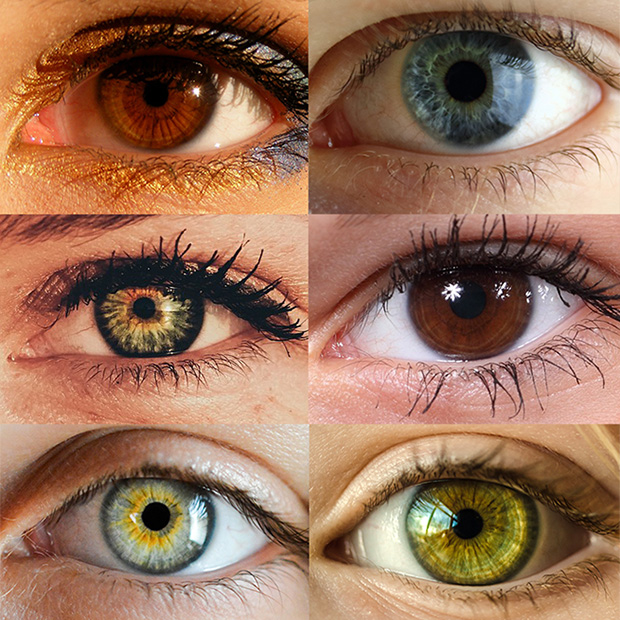Eye Color Trivia

One of the first things we notice about someone when we meet them is their eyes.
The color, the shape, the expression, the eyelashes and eyebrows. In this post, we’re just going to focus on the color, because it’s a lot more complicated than you might expect!
How Common Is Your Eye Color?
The exact statistics of human eye color are hard to pin down, but in general, brown eyes (whether light or dark) are by far the most common across the world. In northern Europe, nearly everyone has blue eyes, but that number drops dramatically everywhere else, to the point where blue eyes are practically nonexistent in South America, Asia, and Africa.
The least common eye color is green. There are many slight variations in each of these colors, and sometimes more unusual colors will appear, such as amber, gray, and, in people with albinism, pale pinkish-blue. Another rare possibility is heterochromia, or having two different eye colors. Babies are often born with blue eyes, but the color changes as the melanin develops in their irises over time.
Behind Blue Eyes: Eye Color Genetics
The color of our eyes is determined by multiple different genes, most notably OCA2 and HERC2. Because multiple genes are involved, you can’t always predict a baby’s eye color. In general, brown eyes are more dominant and blue more recessive, but blue-eyed parents will sometimes still have a brown-eyed child.
One of the most interesting things researchers have uncovered about eye color is that blue eyes are the result of a single mutation to the OCA2 gene that turns off its ability to produce brown eyes. This means that everyone with blue eyes shares a common ancestor from between six and ten thousand years ago.
The Function Of Eye Color
As interesting as it is that blue eyes all come from one person with a genetic mutation, they do come with a slight disadvantage. The absence of melanin in the irises leaves blue-eyed people more vulnerable to damage from UV rays (which means it’s extra important to wear sunglasses if you have blue eyes).
Interested In Trying Out Another Color?
Every pair of eyes is unique and beautiful, but if you’ve been wondering what a different eye color would look like on you, we can help you find the perfect pair of color contact lenses, so come see us soon!
